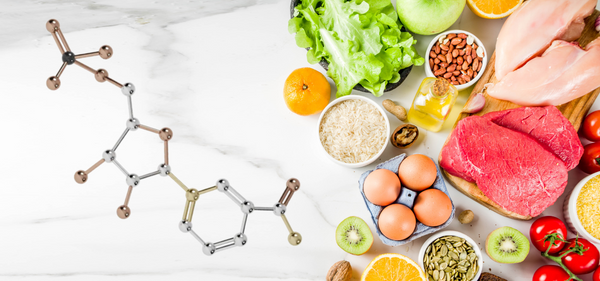WHERE DO WE GET OUR ENERGY?

We know that our body produces energy to fuel exercise. But did you know that the body produces energy in three different ways – each of which are influenced by the type of exercise we are doing? A better understanding of these energy systems will help you figure out the amount of energy you need and also the most appropriate food to fuel your exercise.
The first thing to do is to introduce every athletes friend – Adenosine TriPhosphate (ATP). ATP is essentially the “energy” used by our muscles in exercise. All of the energy production systems we look at below end with ATP being produced and driving our muscle’s activity. ATP stores within muscles are extremely limited. It must be manufactured using one or more of the three energy pathways: the phosphagen, glycolytic pathway and the aerobic oxidative system.
- The Phosphagen System (anaerobic)
The Phosphagen System is first out of the blocks when it comes to producing energy. It does not require oxygen and uses a molecule called PhosphoCreatine (PCr) in order to release ATP instantly. Even through PCr’s concentration within our muscles is approximately 3-4 times greater than stored ATP, PCr stocks are still very small. As a result it only works for intensive bursts lasting only a few seconds. Without an alternative source of ATP muscle fatigue will occur rapidly.
The main advantage of PCr is that it’s immediately available in the muscle allowing it to be used to release ATP as soon as the exercise starts. Activities which relies on PCr to produce ATP include sprints, jumps, weight lifting or other explosive burst of effort which need instant energy or ATP.
For endurance athletes, the phosphagen system is like a starter motor – it provides just enough energy to get started and allows the body time to find a more sustainable source of ATP. Typically this is the glycolytic system.
- The Glycolytic System (anaerobic)
The Glycolytic System – or Glycolysis – involves the breakdown of carbohydrates (in the form of either blood glucose or muscle & liver glycogen) but without the presence of oxygen – hence it is “anaerobic”. Glycolysis enables the formation of 2 ATP for 1 molecule of glucose. So while very little energy is produced this energy can be generated within a few seconds.
The down-side of this system is that it produces a waste product called pyruvate. Without oxygen, pyruvate is converted to lactate which can accumulate in the muscles. Lactate – as we all know – can become a limiting factor to effort!
Depending on the level of intensity and your lactate pain threshold, the gylcolytic system can support efforts lasting from 30 seconds to about 2 minutes – a fast start perhaps or a mid-race hill-climb. By then your body needs to have introduced oxygen into the equation or your effort will cease – i.e. we need the Oxidative System.
- The Oxidative System (aerobic)
The Oxidative System as the name suggests involves oxygen. Once oxygen is present our options for producing ATP in sustainable quantities increase.
Firstly, the presence of oxygen enables the conversion of the waste product of the glycolytic system – pyruvate – into ATP rather than lactic acid. From an energy perspective this is a far more efficient use of our glycogen stores as we can now generate 38 ATP for 1 molocule of glucose – rather than the 2 ATP produced by the anerobic glycolytic system. It also doesn’t hurt as much!
Secondly, the body can also use oxygen to help convert fatty acids (triglycerides) to ATP using a separate aerobic process knows as β-oxydation. This is by far the most energy-efficient process – with a whopping 463 ATP per molecule of triglyceride.
From an energy perspective, the primary difference between these two processes is time. It takes longer to process ATP using our fatty acid stores than it does using our glycogen stores. As a result the body will rely on ATP produced from glycogen for more immediate or higher intensity energy requirements, and ATP produced from fatty acids for longer term or lower intensity energy requirements.
Summary
The body has three systems for producing energy for our active muscles. They support different points in our activity and different levels of intensity. You may in fact use all three during a race with one being more dominant at certain points that the others depending on the intensity, duration, type of activity and of course your fitness level.
Over the course of this series we will explore how to make use of these systems to make the best use of your training – whether for health or performance reasons.
References
Maughan RJ. (2000) Nutrition in sport. An IOC medical commission publication in collaboration with the international federation of sports medicine. Blackwell Science Ltd. Encyclopaedia of sports medicine, ISSN. Vol. VII, 698p.
Rodriguez NN., DiMarco NM. and Langley S. (2009) Position of the American Dietetic Association, Dietitians of Canada, and the American College of Sports Medicine: Nutrition and athletic performance. J Am Diet Assoc. 109(3):509-527
About Elivar
Elivar – Sports Nutrition optimised for athletes over 35 year old. Our bodies change as we age, so should our sports nutrition. Try our Weekend Endurance Pack – fuel a weekend’s training with a selection of our Endure, Recover and Hydrate products for only £12.99 Try Now
Also in News

Elivar's Sustain Go! Energy Gels Fuelling BigFeat Events' Success
BigFeat Events, recognized for orchestrating captivating endurance events, stands out for its dynamic blend of cycling and running sportives. The recent "Beast to the East" cycling sportive, held on May 21st, is a sterling example of their commitment to crafting exhilarating experiences. A cornerstone of the success and popularity of these events has been the provision of Sustain Go! energy gels, generously sponsored by Elivar.
Previous running and events such as the "Bigwayround Trail Run" and "BigSea Trail Run" also benefited from the free distribution of Sustain Go! energy gels, much to the participants' delight. The energy boost and quicker recovery offered by these gels have consistently been instrumental in empowering athletes to perform their best.

NMN: Boosting Your Health from the Kitchen to the Medicine Cabinet
Did you know that Nicotinamide Mononucleotide (NMN), the star ingredient in numerous anti-aging supplements, also moonlights in several foods you might already enjoy? It's true! NMN is a vital precursor to NAD+, a molecule crucial to many biological processes, like cell growth, DNA repair, and metabolism. But as we age, NAD+ levels take a hit, and bolstering them through NMN intake can be beneficial. Now the question arises, can we simply count on our daily meals for our NMN fix?

